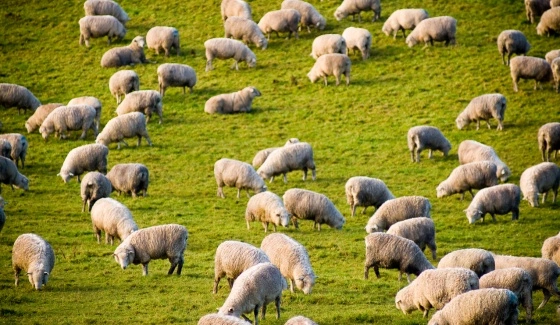
If sheep and cows were born with wheels, breeding them would be a whole lot easier! I know much has been said about us “numbers breeders” but as you hopefully know by now, we are also keen on functional animals with good structure and in merinos – good wool.
I have often pondered when observing a giraffe roaming the plains of Africa or a red deer running around in New Zealand how important it all is. They seem to support good weight on hocks that are close to touching and questionable pasterns. Anyway, I’m going to assume that over the 10,000 plus years of domestication, sheep and cattle with sound structure have come to the fore. This is based on the fact that sheep and cattle have, on average, pretty good structure. Arguably, with the advent of more powerful tools to select the highest performing animals (genomics and breeding values), the current era has the highest risk of breeding animals with poor structure, particularly if sires and dams of high merit happen to have poor structure. In reality, I don’t see this happening at large scale but there are certainly some “numbers driven” studs that have let some structural faults creep into their breeding programs. Equally, I have seen most of our “numbers driven” ram breeder clients putting a lot of emphasis on feet and structure. I think it is very important that we maintain our eye on the ball and that we keep breeding a very functional animal to cover the large distances and rough terrain required in many circumstances.
There are many challenges associated with breeding ‘the perfect animal’, but feet and leg structure probably have us the most confused. We get to see a lot of sheep these days, sometimes it is the same sire used in different locations, and the results for most traits are fairly consistent. However, when it comes to feet in particular, on one property a ram will throw terrible feet, on another they will be perfect. Many people will have observed this in ewes and rams, the ewe drop will have minor feet and/or leg problems and the same drop in the rams will have a much higher proportion of problems. The last couple of years, with increased amount of grain feeding as a result of the dry conditions in Australia, seem to have thrown up further problems with extended periods of grain feeding to young stock. There is clearly an interaction with growth rate (animals getting very heavy at very young ages), the type of feed being offered – fast growth off high energy diets can end up with significant hoof growth. We certainly see a lot more problems in males but I think this is associated with them being fed up for sale.
As usual in life, the problems are easy to identify, the solutions are a little less clear. The only solution I can come up with is to study the whole thing a lot more intensely than I have been. To do this we are going to need to collect data. In beef cattle, structural traits are routinely scored and many astute cattle breeders are providing breeding values for these structural traits on their bulls. There are a small number of sheep breeders doing this to some degree. I think it is time to put some emphasis on scoring structural and feet attributes with some degree of repeat ability so that we can start to understand the relative impacts of genetics and environment in what we see as structural faults. The reason for this is two-fold, some animals that appear to have good structure but are carrying the genes for poor structure (they just haven’t been allowed to express) will get used more widely than they otherwise would have, and secondly some animals will have a structural fault that may be 100% environmental and their genetics may be for good structure.
There are currently a set of structural score charts that were released a number of years ago. I don’t find these particularly useful because they combine a range of faults into single scores. I have made an attempt to characterise the things that we tend to look at when assessing sheep.





We are currently trialing out these scores by scoring a couple of thousand photos that we have on file. Along with testing how usable these scores are and testing whether there are any sire effects. We are looking to see whether we can train a machine learning model to automatically assign these structural traits from images, ideally in a paddock scenario. We see that this could have a number of advantages, obviously it would hopefully save a job but also these traits could be assessed several times throughout an animal’s growth phase and this could shed some light on when things start changing. It also allows for the animal to be assessed when standing in its natural environment rather than bunched up in a classing crate which makes hocks and pastern assessment particularly difficult. We’ll keep you posted on these developments. We would love your feedback and insight into the things you tend to look at when assessing structure. It would be good to get this right and then implement more widely.




.jpg)




